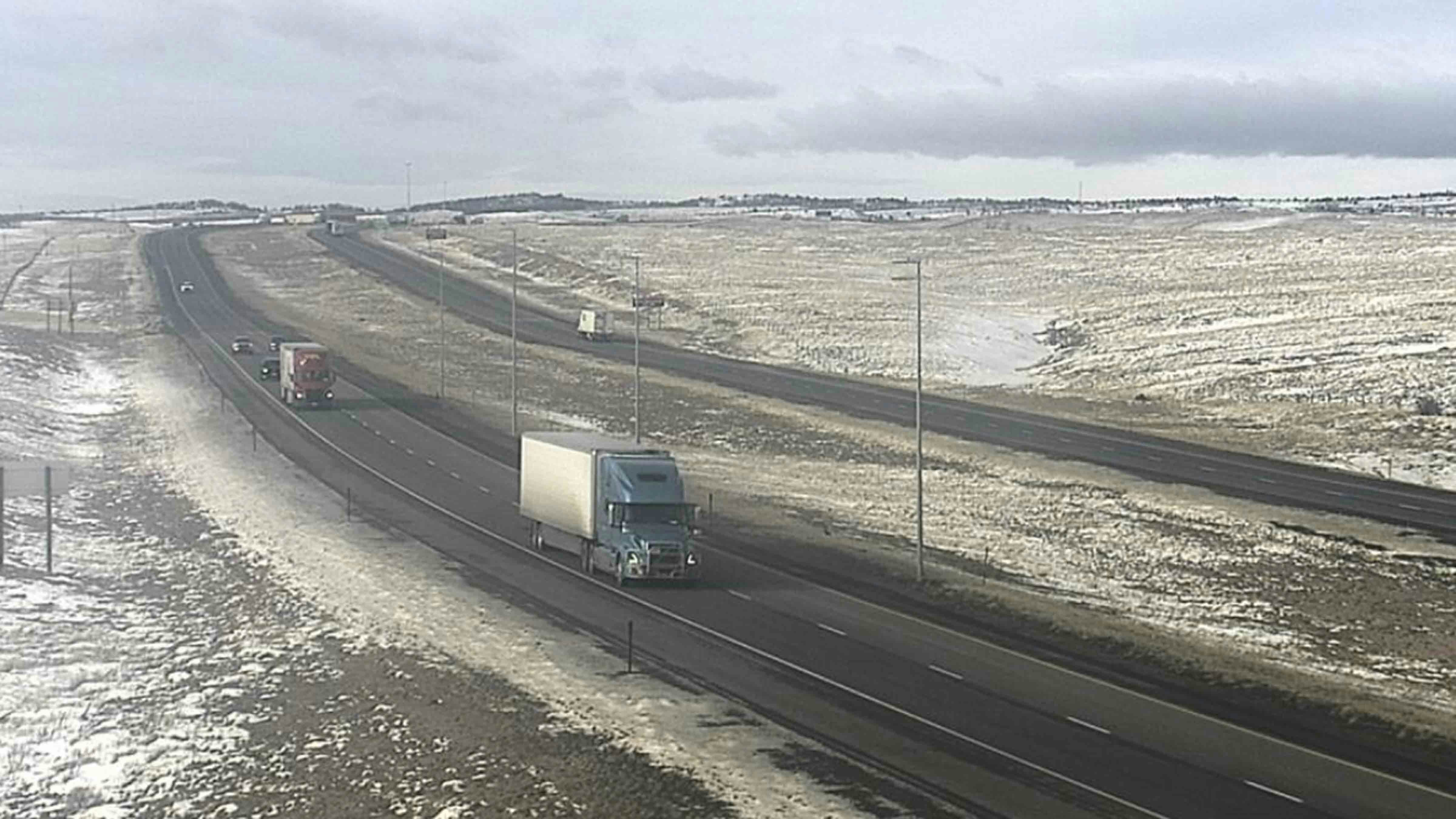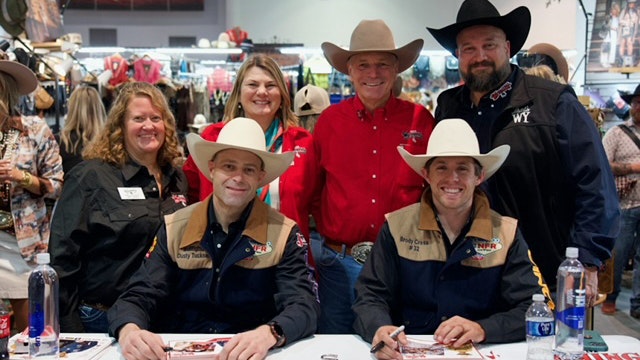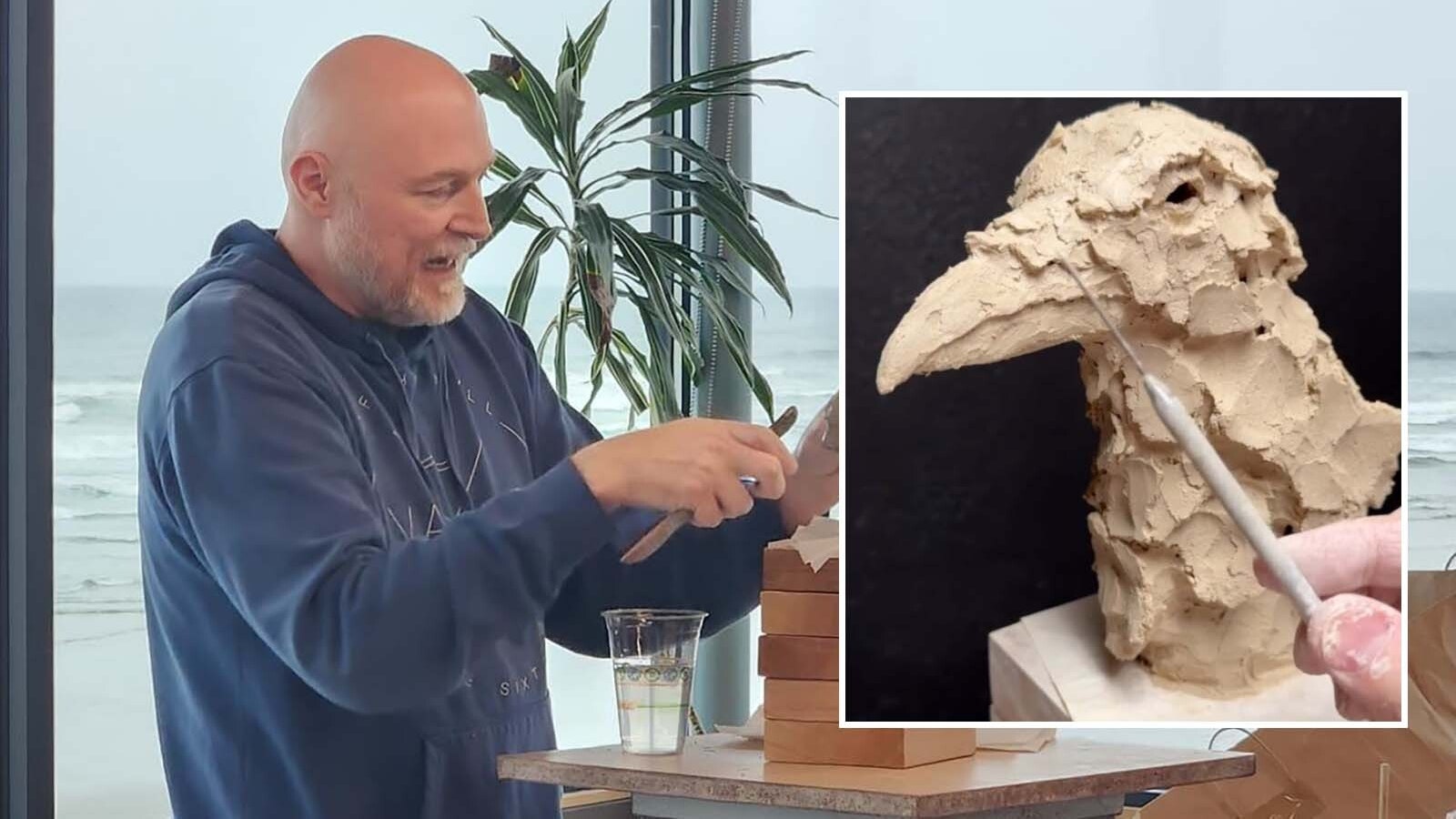JEFFREY CITY — Tucked along the vast 125-mile stretch from Rawlins to Lander, Jeffrey City may appear as a relic of the past.
If you blink as you drive down Wyoming Highway 789, you might miss the remnants of a town seemingly frozen in time. The boarded-up, abandoned-looking buildings and storefronts have earned Jeffrey City a reputation as a ghost town. The “Biggest Bust of Them All," at least that’s what the historical marker says.
However, to the estimated 60 or so people who live within the town limits, Jeffrey City is very alive. The town and their lives continue just like everyone else’s, albeit among decaying buildings that serve as constant reminders of what the town once was like.
The uranium industry built the town. The jobs brought the people. A lively town sprang up from the sagebrush. Then major layoffs sealed the town’s fate as a uranium bust town.
However, Jeffrey City didn’t die in the 1980s. Some people just stopped looking for the Wyomingites who are still there. The documentary, “Jeffrey City’s Not Dead: The Voices Of A Modern American ‘Ghost Town,’” traces the lives of six residents, offering a window into a place that sparks curiosity across Wyoming, but is often dismissed or treated like a roadside oddity.
The Couple Who Left And Came Back
On a cold, windy near-spring day, Linda and Stephen Borden sat on the chilly concrete steps of what was once the foundation of their “cracker box” house, a term used for the single-story trailer homes that once lined Jeffrey City streets.

Linda says she wishes she could call over her sister to visit. The Bordens’ family members once lived in cracker boxes too. When layoffs hit the town, their family members were forced to leave.
“Everybody that was associated with Western Nuclear had housing through them. So, you don’t have a job, you don’t have housing anymore,” Linda said. “...Probably within two weeks, everyone was gone.”
The town, which grew to over 4,000 people, was built by the uranium industry, with as many as 1,000 people employed by mining companies Western Nuclear and Pathfinder. The industry transformed the ranching community, previously called Home On The Range, into a bustling town with multiple restaurants, bars, activities and a grocery store.
While there were hundreds of layoffs at both companies leading up to 1981, the Bordens say Western Nuclear’s June 4 layoff of 244 workers signaled the end.
“The town got together and they had a big garage sale that weekend and everybody was trying to sell everything,” Linda said.
Stephen moved to Jeffrey City from Colorado Springs in November 1975 to work for Western Nuclear as a top lander, who mainly worked on the surface, lowering miners underground. Linda and their two young sons joined him by Christmas that year.
With Sheep Mountain in his view, Stephen recalled that he never felt unsafe at his job. Though, both Stephen and Linda drove an ambulance for the mines. Once, Stephen transported a friend who ended up permanently paralyzed.
Though old newspaper clippings and historical blogs document bar fights, sexual assaults and even a killing, many in Jeffrey City remember the boom days fondly.
For the Bordens, Jeffrey City was a family-friendly, neighborly place.
The town’s heart was at the mines, but also at the school, said Linda, who worked for several years as a teacher’s aide and receptionist. At its peak, Jeffrey City schools had about 600 students.
“It happened like overnight,” Linda said. “As soon as the school got word that Western Nuclear was doing all the layoffs, they brought the teachers in. They had just signed their contracts for the next year. They had to call the teachers in one by one and say sorry, you don’t have a job here anymore.”
The Bordens watched the town’s population dwindle for the next 11 years. Prior to the bust, they had moved to a home outside of town. They eventually moved to Casper but continued visiting their Jeffrey City cabin property to hunt, fish and collect rocks.
To them, Jeffrey City will never be a ghost town.
“Because we know all the ghosts that live here,” Stephen said.
They moved back to Jeffrey City about three years ago. They’ll enjoy their retirement in the town they view as home.
“In a normal society, where you move away and you stay away, I think you forget,” Stephen said. “Once in a while you may look back, but when you live here again now, every day you’re reminded of where you’ve came from and what it used to be like.”
While the mining areas are reclaimed and some structures are permanently vacant, there are properties that are still standing, like the fire department, a church, a pottery shop and a bar.
These days, the Bordens manage the Jeffrey City Community Baptist Church for residents, as well as transcontinental bicyclists who frequently stop there in the spring and summer to stay the night for free.
The Bordens wish a few more people would move to Jeffrey City, at least to support a grocery store.
“To me, looking down from the house onto everything that used to be is heartbreaking sometimes, but yet, with the sunrises and sunsets, it just makes you feel how blessed you are,” Stephen said.
The Townhouse Caretaker
Jeffrey City’s townhouses are a stark representation of the town’s once-bustling population. The 10 buildings, which each have six 1800 square feet apartments, were once full of families in brightly painted homes, according to Bill Rowley, the property’s caretaker.
“When they were first built, they were really quite something. To look at them now, it’s almost sad,” said Rowley, who visited the town during its boom days.

Rowley is one of a handful of tenants living in the townhouses, which many people assume are abandoned. He doesn’t own the property, but he volunteered to help out the owner by making repairs and keeping a watchful eye out for vandalism and squatters.
Many of the doors and windows are boarded up, but Rowley has access to a few units, which stand out for their bright orange, green and red carpets. Built in the mid 1970s, if the roof is intact and no one has scavenged their parts, they look dusty, but relatively untouched.
Rowley, who spent much of his career involved in either construction or real estate, thinks some of them are in pretty good condition. He estimates some townhouses have been empty for at least three decades. Tenants only live in the homes in better condition.
“I was kind of surprised that they were in the condition that they were. I mean, in as good a condition as they were being abandoned for 30 years,” Rowley said. “I was expecting drywall falling out of the ceiling and insulation. Stained walls and all kinds of stuff.”
The buildings with roofing problems are either beyond repair, or on their way if they’re not repaired soon.
Rowley grew up in Wyoming and always planned to retire there, but he wasn’t expecting to move to Jeffrey City in 2017. He was searching for some quiet. In Jeffrey City, the loudest noise is the wind.
“I was in pretty bad shape when I moved here. My health was failing in a major way and I had just had a family tragedy,” Rowley said. “One of my sons had passed away tragically and I needed a place to heal.”
Today, Rowley said he’s in the best health he’s been in for a long time and enjoying the peace, rock hunting and nature the town offers. He said he’ll die in Jeffrey City, but that’s not a sad thing.
“I’ve had the busy life with all the children. I’ve had the fun and the amenities and all the wonderful things in my life,” Rowley said. “If you’ve seen as much as I have and been down some of the roads that I have, you’d find a place like this refreshing too.”
The Protector
While Jeffrey City has no in-town law enforcement, Jeffrey City Volunteer Fire Department Chief Vern Redland keeps an eye out. He’s a deputized citizen, and it isn’t uncommon for people to call him before they call 911.

Born in 1980 and raised in Jeffrey City, Redland watched the town slowly fade, but that didn’t change his feelings about the place. It’s home.
“I don’t like it when people make fun of Jeffrey City because they think we’re a bunch of radiated, backwoodsy Hoboken,” Redland said as he drove through the mountains near Jeffrey City, pointing out his favorite spots. While the town is known for uranium, it’s also rich with Oregon Trail history, jade hunting and beautiful nature and wildlife.
“As a fire chief and community leader, I want my community to be recognized as a lot of good people,” he said. “And we are. We’re not backwoods out here at all, we just live out in the sticks.”
As the leader of the fire department, Redland is often one of the first people on the scene for any Jeffrey City emergency.
On April 6, a brush fire north of town broke out. Redland and Assistant Chief Tom Corbett were the first to arrive. It was about three to five acres when they got there, but it grew to about 20 by the time it was out.
As a volunteer fire department with little income, they’re often left using older equipment.
“I think the biggest thing that we’ve got going for us as a fire department is we improvise,” Redland said.
By the time the fire was out, several Jeffrey City firefighters had arrived, along with help from Lander and Fremont County firefighters.
Since the uranium bust, there have always been whispers that mineral mining, oil and gas or uranium might revive the town, Redland said, adding “That’s like wishing on the wind to blow. You never know if it’s going to do it or not.”
“We’re more than just a ghost town,” Redland said. “... We’re not going anywhere.”
The Artist
The Monk King Bird Pottery shop is one of the most recognizable pieces of Jeffrey City. Just off the main highway through town, Owner Byron Seeley makes and sells functional pottery out of a colorful old gas station.

He bought the building in 2008, looking for an affordable place to run his business. He sells mostly to travelers during the spring, summer and fall, and spends the winter in Lander with his mother. Every day he makes unique pottery with layered black, white and red clay.
“I have to make 50 pieces in order for one to come out especially nice, even though I did exactly the same thing,” Seeley said.
The shop is full of his artwork and remnants of past projects, like cardboard boxes and half-done pottery. The front parking lot has old cars, appliances and tons of “open” signs, creating a curious environment that draws in passersby.
The pottery shop name comes from a friend he met in Texas, who carved him a sign before leaving town. The friend never said goodbye to Seeley, but he left behind a sign that said Monk King Bird Pottery. Seeley asked for it to say Mockingbird Pottery. He went with it anyway.
The ambience is calm, with Byron’s instrumental playlist playing quietly in the shop. His dog, Floyd, greets everyone with a wagging tail.
It wasn’t always this way, though.
“When I first moved out here, I was pretty sober, as I was dating someone who didn’t like drinking,” Seeley said. “That ended and I was drinking quite a bit.”
For several years, he said he wasn’t focused on pottery or being present at the shop but instead partying and drinking. Today, that has totally changed. He’s been sober for eight years, and he said he feels successful.
“A lot of it has to do with my mom. [She] had lost my dad, and then my sister, and then my brother,” Seeley said. “My conscience was part of it, not wanting to have my mom lose another family member and I was on that track.”
People often tell Seeley it’s sad that the town shut down. He agrees but makes one point.
“If it didn’t, there wouldn’t have been an extra building sitting there for dirt cheap, so I wouldn’t be here,” Seeley said.
With the town being so affordable and quiet, he said in some way, it must have worked out for some people.
The Gathering Place
Perhaps the most well-documented spot in Jeffrey City is the enduring Split Rock Bar & Cafe. It opened before the uranium boom, which began in the 1950s. It also outlived every bar and restaurant that ever moved into Jeffrey City.
“To me, this place is more special than most people would imagine because I knew almost everybody that had it before me,” said Isebel Hiatt, who took the bar over in 2012 from Ronnie Wilmes, a friend and father figure who signed it over to her before he died.

Hiatt grew up on a ranch near Green Mountain and went to school in Jeffrey City. As a child she would go to the Split Rock and get ice cream with her father and sisters. As a young adult, she was a waitress at the bar.
“I couldn’t see it go to somebody that didn’t care as much as I do,” Hiatt said.
She views the bar as part of her, and said she took ownership of it to make sure a nonlocal resident didn’t buy it and bulldoze it. Residents view it as one of the few places to socialize.
“A lot of people say it’s the hub of Jeffrey City, but I just think it’s a place to visit, and a place to congregate,” Hiatt said.
Hiatt brings her ranching roots to the bar with a chicken coop and billy goat that she cares for behind the building. Residents stop in and buy her fresh eggs. Though, due to regulations on eggs and meat, she can’t use them to cook.
While a handful of residents frequent the bar, she mainly relies on bicyclists and tourists who stop in for a burger or drinks during the warmer months for business. In the winter months, she may not see a customer for a whole day.
She doesn’t feel sad or happy that the town is so different from when she was growing up, she said. To her, it is what it is.
“I don’t want any more people. The people that are here are friends and they rely on each other every now and then,” Hiatt said.
As for what’s next for Jeffrey City? Hiatt won’t try and predict that.
“This place has its own future. There ain’t nobody going to tell you what it’s going to be like in the future, and I can’t tell you what I want in the future because this place is this place. It will do the future on its own,” Hiatt said.
Reilly Strand can be reached at: Reilly@CowboyStateDaily.com
Hannah Brock can be reached at: Hannah@CowboyStateDaily.com




